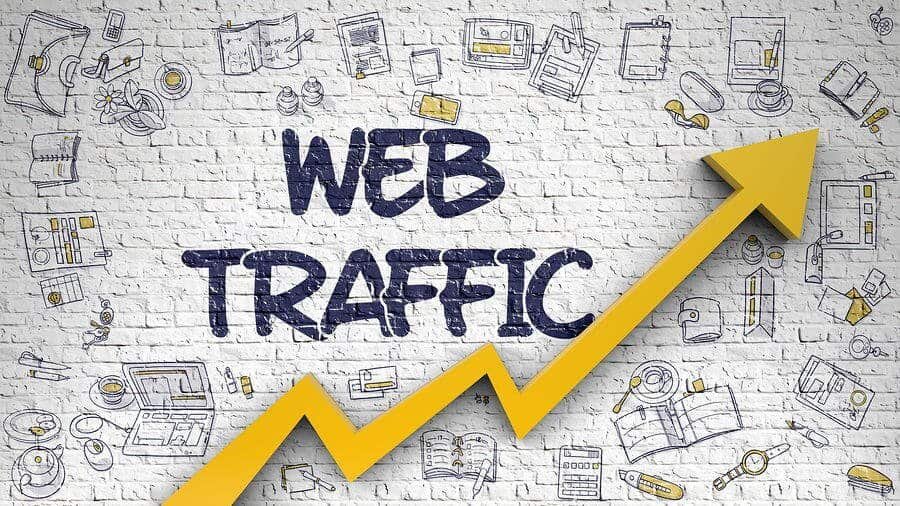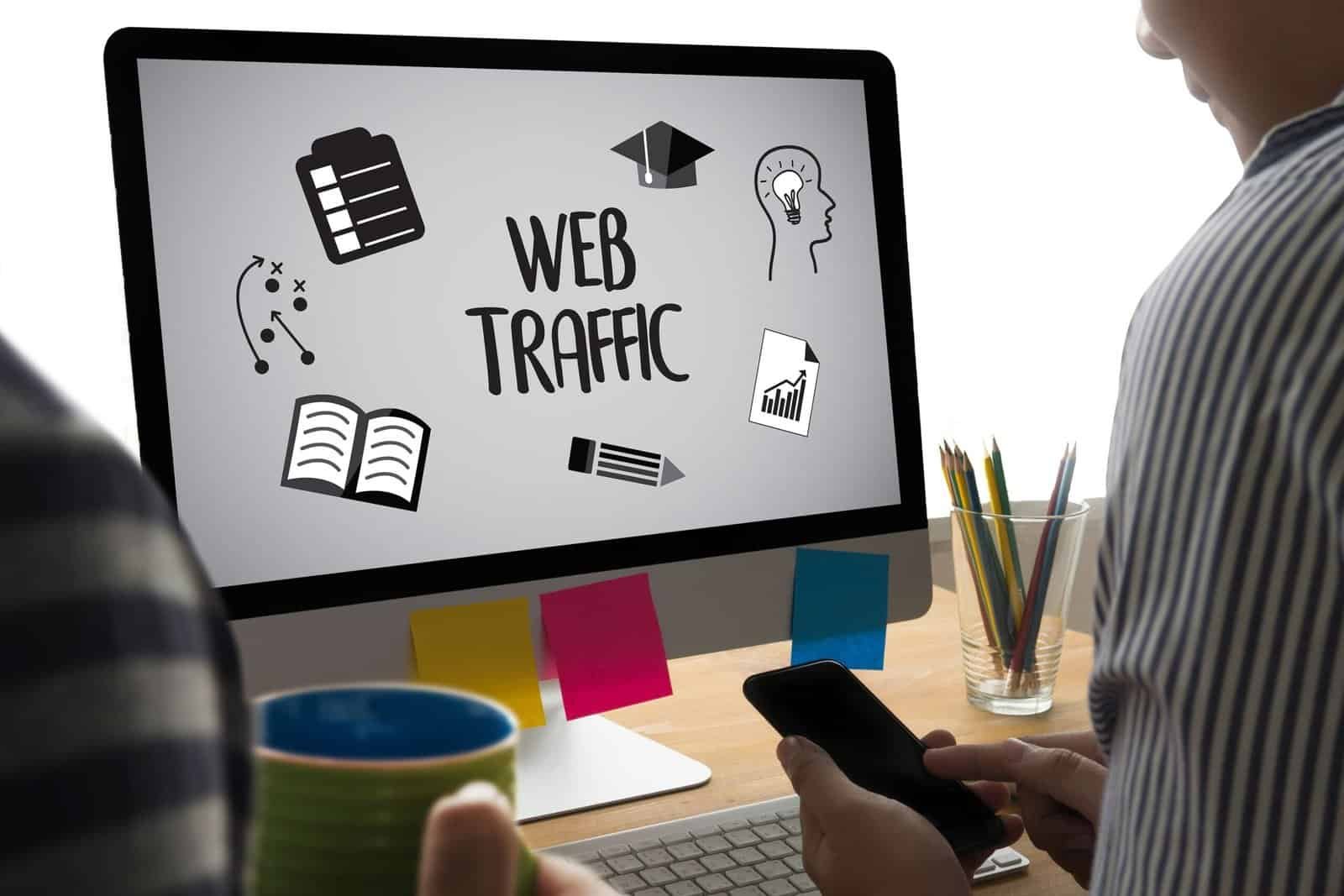Generating traffic to your website has become more important than ever because having an online business, running a personal blog or even a corporate site relies heavily on the flow of traffic. Given the rapid expansion of technological innovation, AI has become an indispensable tool for optimising website traffic. This blog will lead you to the fundamentals on website traffic and how utilising AI tools play an important role in mastering and generating traffic. By incorporating advanced algorithms and data analytics, businesses can pinpoint their target audience more effectively than ever before. This allows for the development of tailored website traffic strategies with AI that enhance user engagement and increase conversion rates. Ultimately, leveraging these technologies not only streamlines the traffic generation process but also helps you stay ahead of competitors in a crowded digital landscape.
What is Website Traffic?
Website traffic – the number of visits (also known as sessions) to your website – is the lifeblood of any website. It’s the number of unique folks showing up for your party. Being able to measure the volume of traffic to your site is important because it tells you a lot about who your audience is, how effective your marketing efforts are, and, ultimately, whether your site is doing what you need it to do: convert those visitors into customers.
There are different types of website traffic, including:
- Direct Traffic: Visitors who enter your website URL directly into their browser.
- Organic Traffic: Visitors who find your website via search engines like Google or Bing.
- Referral Traffic: Visitors who come to your website through links on other websites.
- Social Traffic: Visitors who access your site via social media platforms.
- Paid Traffic: traffic that comes from paid visual displays, such as Google Ads, or through social media ads.
Why Website Traffic Matters
Although there are other metrics to consider beyond just website traffic, it is one of the most important; increased traffic volumes tend to translate into increased sales, ad revenue worth the millions, and more recognition for the brand in question. However, it is not only about the amount of traffic that is logged, but also the quality – who is reading your content, clicking on your affiliate banners and links, or hopefully buying your products and services?
A strong understanding of website traffic helps you:
Get more traffic through SEO: If you know where your traffic comes from, you can adapt the site to improve search engine rankings.
Increase the user experience and satisfaction: the traffic data can be used to create a better site contend and design.
Increase conversions: Knowing how visitors behave means that you can make your marketing reflect that behaviour to convert visitors into buyers.
Make Informed Decisions: Traffic analysis provides data-driven insights for strategic planning and marketing campaigns.

How AI is Revolutionizing Website Traffic Management
More than just a buzzword or a passing trend, artificial intelligence affects the way businesses market websites and improve the traffic that converts. From generating content to optimising search engine optimisation and boosting user experience, artificial intelligence can help you get more visitors, retain them and drive them toward your end goal.
AI-Powered SEO
Search Engine Optimisation (SEO) is one of the most important pillars of your organic traffic strategy. With AI tools like Moz or Ahrefs, you can organise enormous amounts of data and optimise your page for search engines. By suggesting you certain keywords, analysing your comps and even generating trendlines, you can make sure you land on the first page of the search results.
By showing a data model, your keyword research can display what people are searching for your page. AI-powered tools can also analyse website tags, descriptions, competitors, traffic metrics and more. Integrating technology into your software stack makes you a data-driven test-and-learn department that can optimise and scale your content super quick.
It can also automate aspects of search engine optimisation (SEO), like improving your meta tags, creating URLs that are more SEO-friendly, and better structuring your website so that Google and other search engines can more effectively index and crawl your site.
Content Creation and Personalization
Content is king. If you want to build traffic, you need quality content. And many AI tools – eg, Jasper and CopyAI – are designed to help you create SEO-optimised, audience-specific content that meets a lot of your needs. You feed these tools a topic. It’ll then use machine learning algorithms to organise the content in ways that respond to user intent and create a type of content that will appeal to your readers (and improve engagement scores, lower bounce rates, etc).
Furthermore, in terms of personalising content, it would learn from the user’s past behaviour towards the content and could be trained to send the user tailor-made recommendations on what to read next in the form of personalised blog posts, emails or newsfeeds, adding to its user’s experience and keeping him coming back for more.
Predictive Analytics for Traffic Forecasting
Under the name of predictive analytics, needs very little to go to the next step, which is to predict traffic trends based on past data. Google Analytics 4 or IBM Watson, for example, both use machine learning artificially intelligent tools so that you can anticipate the respective evolution of your traffic and propose helpful content and marketing strategies accordingly.
For instance, if you manage a website and you see a spike in traffic in a certain season each year, AI should be able to pick up on this and proactively increase your marketing activity before the season runs. This sort of advanced forecasting can ensure you’re matching resources to demand and, as a result, boost conversion rates.
AI-Driven Social Media Marketing
Social media provides most of your website traffic, and AI helps to improve your social media strategy by automatically studying behaviour and reaping insights about the best time to post. You can automate postings and receive information about the content that works best on each platform.
Besides, it can help with content creation for social media pages, tracking trends and interactions among your target audience to generate content tailored for a wider reach and greater engagement. They say: Opportunistic, effective, and targeted, writing like an AI will increase views and clicks.

Steps to Master Website Traffic Using AI
Set Clear Goals
First are a series of questions you should be able to answer before you even get near an AI tool. These questions pertain to your goals and objectives: do you want to increase your website traffic, organic traffic, conversions, click-through rates, user experience, or something else? Having these types of goals in mind will actually help inform your AI strategy and which tool would be more appropriate.
Choose the Right AI Tools
If you haven’t already invested in the right AI tools, you won’t be able to manage or grow your traffic. Your website may need SEO tools, content tools, predictive analytics or social media tools. SEMrush is a good website tool for SEO, HubSpot is a content management system, and Hootsuite is a social media management tool. They all utilise AI to automate tasks on behalf of users and provide insights.
Optimize Your Content Strategy
Content is king; driving traffic; the old entity-matching gambit; ‘AI-generated text has been used to generate this article’ Let AI sift through your content to figure out what type of content resonates most with your audience, and work to create more of that content. Let AI sift through content to pick up on trends and predict where your target audience is going next and prepare content in advance so you’re in the right place at the right time.
Use AI-driven SEO techniques to optimise your content for search. To help you rank better on search engines, you can use AI tools to analyse which keywords perform the best, write optimised meta descriptions for your content, and audit your site architecture to see if it’s already conducive for SEO.
Leverage AI for User Experience Enhancement
Leveraging AI is also great for enhancing UX on your site, which becomes the ultimate goal to secure high traffic: Utilise AI tools to tailor the different journey of users according to each individual’s preference and browsing behaviour. This can include personalised recommendations for content, chatbots powered by AI for conversational assistance in real time, or changing the layout or presentation of a page to better suit a user’s goal.
On the other hand, good user experience will lead to more engagement, lower bounce rates (when users leave almost immediately after entering a website), and returning traffic, which in turn all increase the traffic: Better user experience means more traffic.
Monitor and Adjust Strategies Based on Data
Another great benefit to using AI is to be able to constantly monitor performance and make adjustments based on data. AI tools can provide you with real-time analytics about where your traffic is coming from (ie: Google, social media, emails / newsletters), how users are behaving on your site (what they are clicking, how long they stay, what they are purchasing or not purchasing. Use this information to keep fine-tuning your strategies, test new ideas, A/B test, and always put your website through an optimisation loop.

Common Challenges and How to Overcome Them
Data Overload
While the number of data points produced by AI tools is staggering, you must learn to tune out those that do not contribute to what you’re trying to track. Your focus should be on the metrics that underpin your stated goals (such as, for example, improving organic traffic, conversion rates or user engagement). Do not allow yourself to get sucked into vanity metrics that do not help you reach your objectives.
Integration Issues
While some AI tools might be easy to plug into your existing workflows, others may be more difficult to integrate. Make sure the tools you plan on investing in will communicate well with your existing platforms or, ideally, that you’re using an all-in-one tool such as HubSpot or Salesforce that integrates across multiple functionalities.
Make sure your employees are on the same page putting AI tools in place doesn’t mean your employees should forget about their specific roles. If they defer to the AI too much, you run the risk of losing touch with your customers. That’s because your employees’ interactions with customers bring a human element to your communications. This ‘human touch’ will help build trust and strengthen relationships, which an impersonal machine-generated message can’t do.
Keeping Up with AI Advancements
AI technology is developing really fast and it is becoming difficult to get updated about the latest developments. Keep yourself up-to-date in this field by attending online courses and webinars available from Google and other sources. It is now available in the form of online courses and webinars from Google and other places.
The Future of AI in Website Traffic Management
Clearly editors feel they need AI’s help, and the technology is likely to be central to website traffic control in the future. Indeed, all aspects of digital marketing might see an increasing AI involvement – from content production to live customer interaction. Perhaps the next big marketing innovation will consist of AI bots capable of predicting trends in website traffic and, simultaneously, automatically creating adjustments to your website and ways of attracting new customers, in real time, to maximise visits.
As a business and a marketer, competing in this AI space means learning, adapting and leveraging new technologies to optimise site traffic and overall digital marketing presence.
Conclusion: Embrace AI to Master Website Traffic
To master website traffic is critical for most endeavors online. The elements that underlie website traffic are easier to master than in the past thanks to numerous AI tools at your disposal, which will help you succeed. You only need to learn the basics about website traffic, employ AI for SEO, content creation and user experience (UX), and never give up on learning the secrets for conquering website traffic.
Similar Content
- AI SEO for Beginners: Understanding the Basics
- How To Get More Website Traffic With The Help Of AI
- How AI-Generated Content Boosted Website Traffic to 750K/mo

